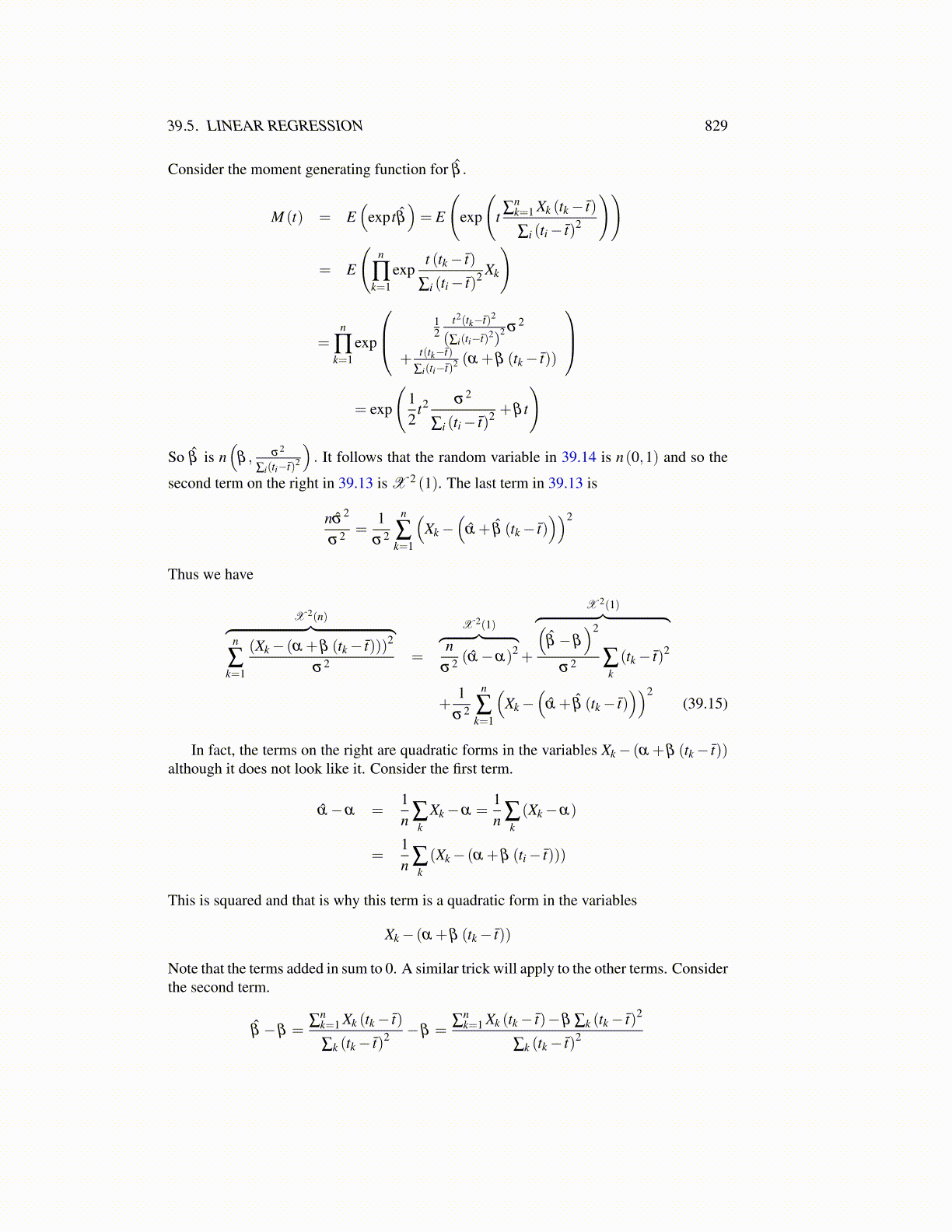
39.5. LINEAR REGRESSION 829
Consider the moment generating function for β̂ .
M (t) = E(
exp tβ̂)= E
(exp
(t∑
nk=1 Xk (tk− t̄)
∑i (ti− t̄)2
))
= E
(n
∏k=1
expt (tk− t̄)
∑i (ti− t̄)2 Xk
)
=n
∏k=1
exp
12
t2(tk−t̄)2
(∑i(ti−t̄)2)2 σ2
+ t(tk−t̄)∑i(ti−t̄)2 (α +β (tk− t̄))
= exp
(12
t2 σ2
∑i (ti− t̄)2 +β t
)
So β̂ is n(
β , σ2
∑i(ti−t̄)2
). It follows that the random variable in 39.14 is n(0,1) and so the
second term on the right in 39.13 is X 2 (1). The last term in 39.13 is
nσ̂2
σ2 =1
σ2
n
∑k=1
(Xk−
(α̂ + β̂ (tk− t̄)
))2
Thus we have
X 2(n)︷ ︸︸ ︷n
∑k=1
(Xk− (α +β (tk− t̄)))2
σ2 =
X 2(1)︷ ︸︸ ︷n
σ2 (α̂−α)2 +
X 2(1)︷ ︸︸ ︷(β̂ −β
)2
σ2 ∑k(tk− t̄)2
+1
σ2
n
∑k=1
(Xk−
(α̂ + β̂ (tk− t̄)
))2(39.15)
In fact, the terms on the right are quadratic forms in the variables Xk− (α +β (tk− t̄))although it does not look like it. Consider the first term.
α̂−α =1n ∑
kXk−α =
1n ∑
k(Xk−α)
=1n ∑
k(Xk− (α +β (ti− t̄)))
This is squared and that is why this term is a quadratic form in the variables
Xk− (α +β (tk− t̄))
Note that the terms added in sum to 0. A similar trick will apply to the other terms. Considerthe second term.
β̂ −β =∑
nk=1 Xk (tk− t̄)
∑k (tk− t̄)2 −β =∑
nk=1 Xk (tk− t̄)−β ∑k (tk− t̄)2
∑k (tk− t̄)2